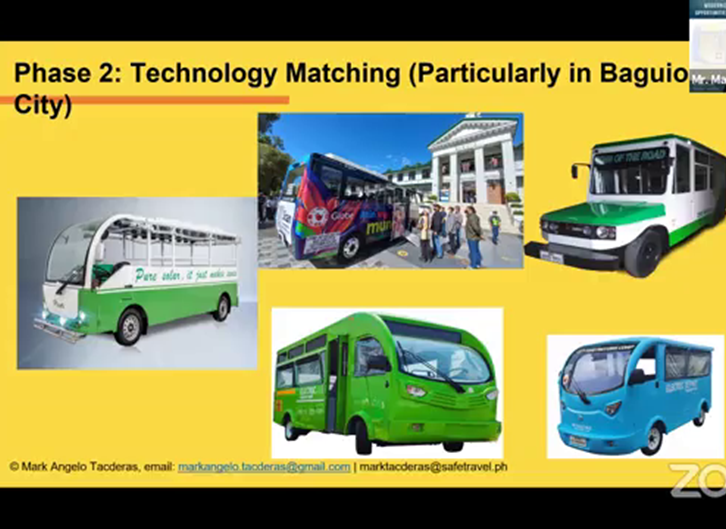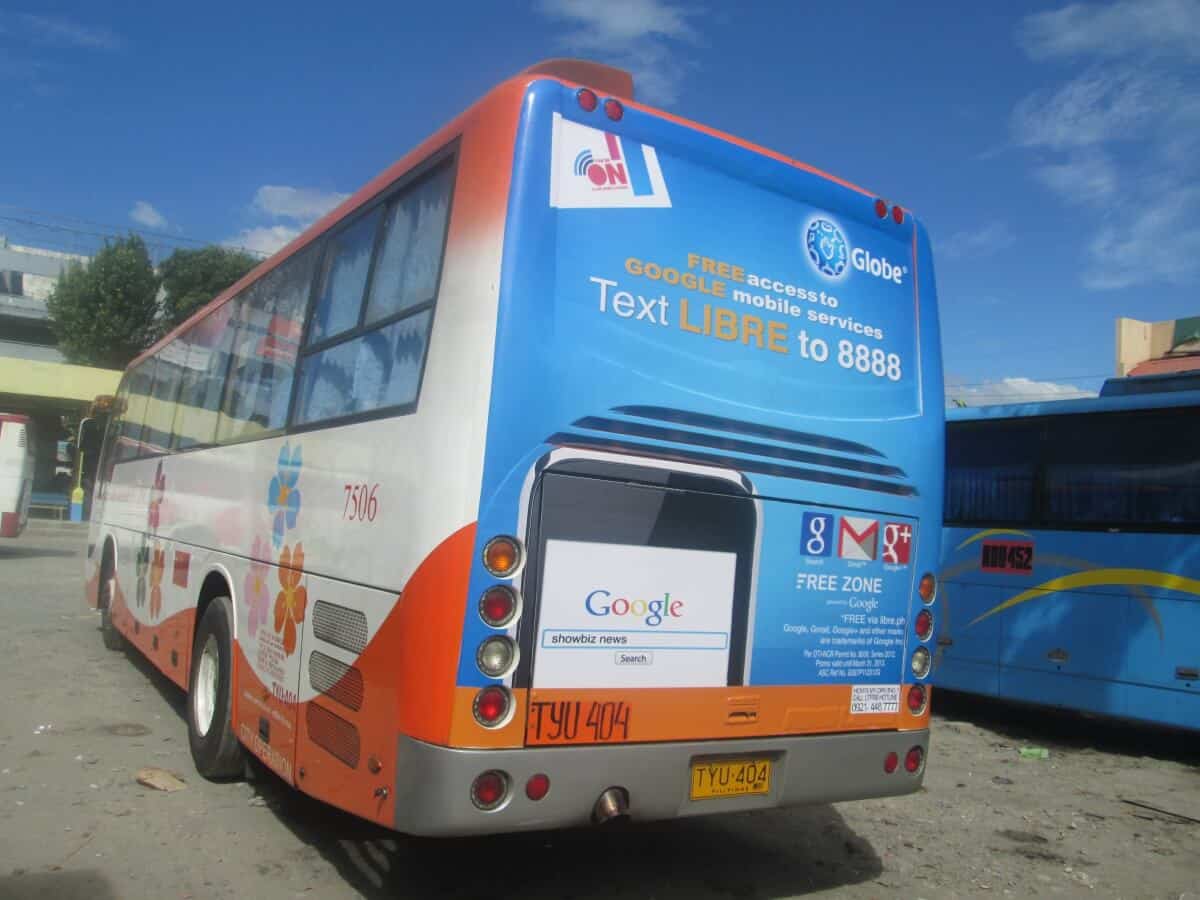Make Best Use Of Exposure with Transit Advertising Philippines
Make Best Use Of Exposure with Transit Advertising Philippines
Blog Article
Understanding the Duty of Transportation Advertising And Marketing in Enhancing Brand Name Visibility and Consumer Involvement
Transportation advertising has emerged as a pivotal aspect in the marketing landscape, supplying unique opportunities for brand names to boost their visibility and engage consumers efficiently. With the capability to reach a captive and diverse target market throughout their day-to-day commutes, these advertising and marketing approaches are not just regarding visibility; they have to do with developing meaningful links with prospective customers. As we explore the multifaceted benefits and ingenious methods within transit advertising, it comes to be important to take into consideration just how these components jointly affect consumer understanding and behavior, increasing inquiries about their lasting effect on brand commitment.
Interpretation of Transit Advertising And Marketing
Transit advertising and marketing describes the practice of promoting items, services, or brand names with advertisements put in and around mass transit systems. This kind of advertising and marketing includes a selection of placements, consisting of posters on buses and trains, electronic screens at transportation terminals, and wraps on the outside of lorries. It aims to get to a varied audience, capitalizing on the high foot traffic related to public transportation.
Transportation marketing is tactically placed to record the attention of travelers, who frequently spend considerable time waiting or taking a trip. By integrating ads right into the daily routines of individuals, brands can create a lasting impression and foster brand name acknowledgment. The tool is particularly effective in urban atmospheres, where public transportation is a primary setting of traveling.
Additionally, transportation advertising and marketing can assist in localized targeting, permitting businesses to get to certain demographics based upon transit courses and station locations. As city populaces grow and using public transport increases, this advertising and marketing approach has actually gained importance as an important element of integrated advertising and marketing methods. The vibrant nature of transportation advertising, combined with its capacity to involve consumers in a restricted environment, underscores its relevance in contemporary advertising methods.
Benefits of Transit Advertising And Marketing
The performance of transit marketing depends on its capability to supply a wide range of advantages to brands looking for to boost presence and engagement. Among the key advantages is the extensive reach it provides; transportation advertisements can efficiently target diverse demographics across city areas, getting to both pedestrians and travelers alike. This wide direct exposure significantly improves brand name understanding.
An additional benefit is the high regularity of impacts. As transit vehicles travel along well established paths and quit at numerous places, they develop repeated exposure that strengthens brand messages. This frequency promotes familiarity, which is crucial in consumer decision-making.
Transit advertising is additionally cost-effective contrasted to other media platforms. Provided its extensive reach and potential for high perceptions, brands often experience a reduced expense per thousand perceptions (CPM), maximizing their advertising and marketing budget plan.
Additionally, transit advertisements can develop a feeling of community link. By aligning with local transit systems, brands can reverberate with local audiences and foster a feeling of local pride. This localized technique enhances brand name loyalty and engagement, making transit advertising an engaging option for companies intending to solidify their existence in the marketplace.

Reliable Strategies for Transit Projects
To take full advantage of the influence of transportation campaigns, brand names ought to leverage critical planning and implementation customized to their target market. First, determining the demographic attributes of the target market making use of public transit is critical. This enables brand names to develop customized messaging that resonates with potential consumers.
Next, choosing the right transportation tools is important. Whether making use of bus wraps, subway posters, or digital screens, each medium has special benefits that can boost exposure. For example, lively visuals on bus covers can stand out, while electronic advertisements can be updated frequently to show prompt promos.
Furthermore, integrating a natural branding strategy throughout transit platforms makes sure uniformity and strengthens the brand name's identification. Making use of eye-catching styles and remarkable taglines will strengthen brand recall among travelers.
By employing these methods, brands can effectively harness the possibility of transportation advertising and marketing, promoting higher understanding and connection with their target audience. Ultimately, a well-executed transit project can drive significant growth in brand name visibility and customer involvement.

Measuring Impact and Interaction
In examining the efficiency of transit marketing campaign, precise measurement of impact and engagement is vital for brands looking for to maximize their advertising and marketing strategies. Metrics such as reach, regularity, and impacts supply fundamental information to analyze visibility. Analyzing these factors helps establish the amount of prospective consumers are subjected to the advertisements throughout their day-to-day commutes.
Interaction can be more gauged through customer communications, such as website traffic, social networks mentions, and straight actions to calls-to-action featured in the advertisements. Using devices like QR codes or distinct Links can help with tracking of customer actions directly connected to transportation campaigns. Surveys and responses devices also function as valuable methods to gather qualitative information on customer perceptions and recall of the promotion.
Furthermore, progressed analytics and acknowledgment versions can correlate transit direct exposure with succeeding purchasing habits, using understandings into the return on financial investment. By employing a comprehensive strategy that combines qualitative and measurable measures, brands can develop a nuanced understanding of their transit marketing effect. Eventually, this data-driven approach allows brand names to improve their projects, guaranteeing they reverberate efficiently with target market and improve total brand presence.
Situation Research Studies of Successful Projects
Successful transportation advertising projects work as engaging examples of exactly how efficient approaches can boost brand name visibility and interaction. Transit Advertising Philippines. One noteworthy case is the "I Love New york city" project, which transformed the city's image and brought in millions of visitors. By making use of metro advertisements, billboards, and bus wraps, the campaign developed a solid, natural brand about his identification, causing a substantial uptick in tourist and regional business patronage
Another exemplary campaign is Coca-Cola's "Share a Coke" campaign, which leveraged transit marketing to individualize the brand name experience. By review including prominent names on advertising materials across numerous transit systems, Coca-Cola fostered a deeper psychological link with customers, motivating them to share their experiences on social media.
In addition, the "Got Milk?" campaign successfully utilized public transport advertisements to reach a wide audience, strengthening the message of the importance of milk in a balanced diet plan. The campaign saw a measurable increase in milk usage in target demographics.
These instance studies illustrate that when performed attentively, transit advertising and marketing can substantially improve brand presence, foster consumer engagement, and drive quantifiable results, showing its essential duty in modern-day advertising and marketing approaches. - Transit Advertising Philippines
Conclusion
Finally, transportation advertising and marketing serves as a vital device for boosting brand name exposure and fostering consumer engagement. By using purposefully put promotions within public transport systems, brand names can successfully strengthen and get to diverse target markets acknowledgment via consistent exposure. The application of targeted messaging and ingenious strategies further intensifies the effect of transit campaigns. Eventually, the capability to measure interaction and analyze effective case studies underscores the efficiency of transit advertising and marketing in driving brand name commitment and consumer communications.
Transit advertising has actually emerged as a crucial element in the marketing landscape, supplying special chances for brand blog here names to raise their exposure and engage customers successfully.Additionally, transportation advertising can assist in localized targeting, enabling organizations to reach specific demographics based on transit paths and station places.In examining the effectiveness of transit marketing projects, precise measurement of effect and engagement is vital for brand names seeking to optimize their marketing techniques.Successful transit advertising and marketing campaigns serve as compelling instances of exactly how efficient techniques can elevate brand name exposure and involvement.In verdict, transit marketing offers as a crucial tool for boosting brand presence and promoting consumer engagement.
Report this page